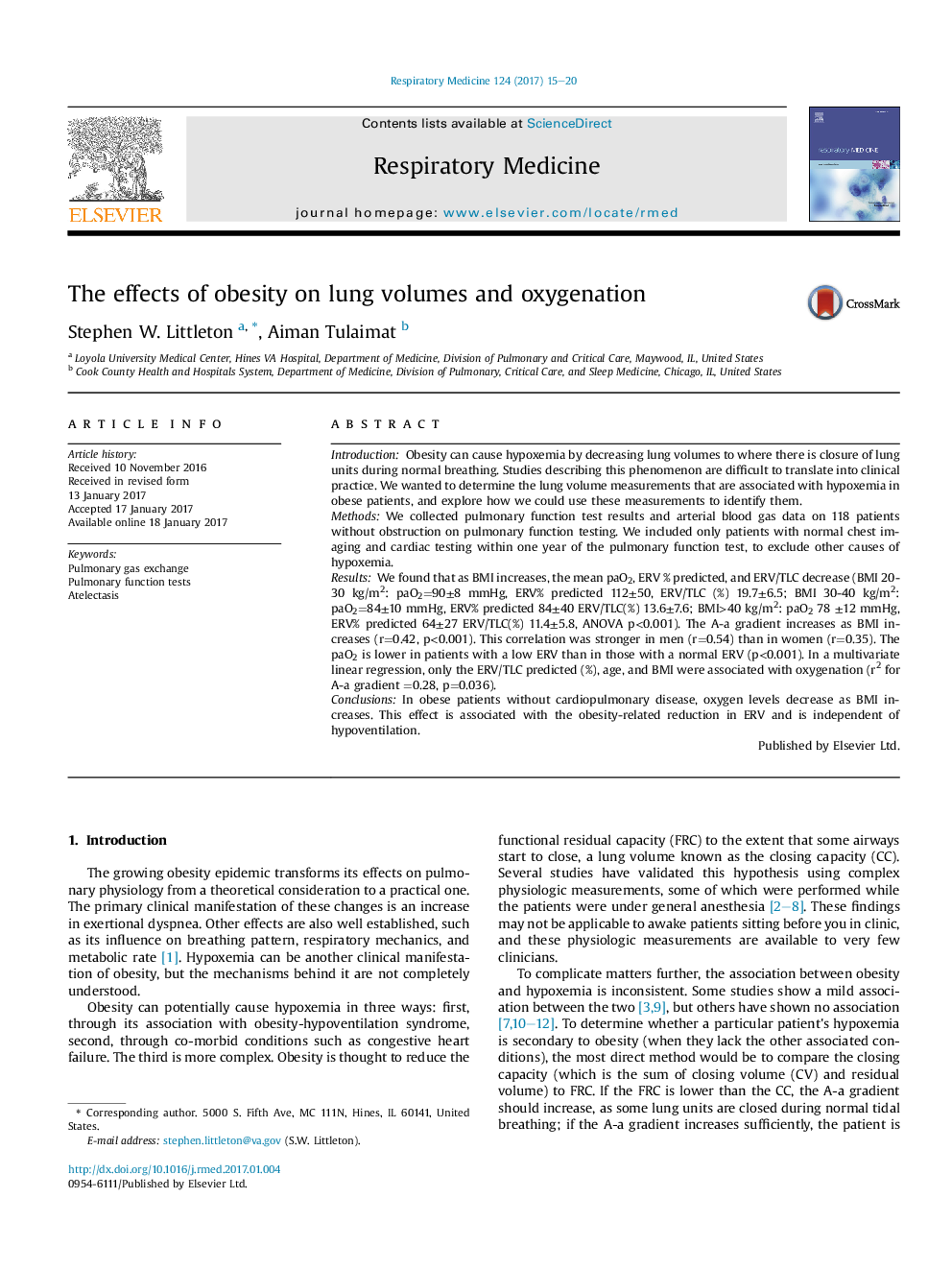| Article ID | Journal | Published Year | Pages | File Type |
|---|---|---|---|---|
| 5725043 | Respiratory Medicine | 2017 | 6 Pages |
IntroductionObesity can cause hypoxemia by decreasing lung volumes to where there is closure of lung units during normal breathing. Studies describing this phenomenon are difficult to translate into clinical practice. We wanted to determine the lung volume measurements that are associated with hypoxemia in obese patients, and explore how we could use these measurements to identify them.MethodsWe collected pulmonary function test results and arterial blood gas data on 118 patients without obstruction on pulmonary function testing. We included only patients with normal chest imaging and cardiac testing within one year of the pulmonary function test, to exclude other causes of hypoxemia.ResultsWe found that as BMI increases, the mean paO2, ERV % predicted, and ERV/TLC decrease (BMI 20-30 kg/m2: paO2=90±8 mmHg, ERV% predicted 112±50, ERV/TLC (%) 19.7±6.5; BMI 30-40 kg/m2: paO2=84±10 mmHg, ERV% predicted 84±40 ERV/TLC(%) 13.6±7.6; BMI>40 kg/m2: paO2 78 ±12 mmHg, ERV% predicted 64±27 ERV/TLC(%) 11.4±5.8, ANOVA p<0.001). The A-a gradient increases as BMI increases (r=0.42, p<0.001). This correlation was stronger in men (r=0.54) than in women (r=0.35). The paO2 is lower in patients with a low ERV than in those with a normal ERV (p<0.001). In a multivariate linear regression, only the ERV/TLC predicted (%), age, and BMI were associated with oxygenation (r2 for A-a gradient =0.28, p=0.036).ConclusionsIn obese patients without cardiopulmonary disease, oxygen levels decrease as BMI increases. This effect is associated with the obesity-related reduction in ERV and is independent of hypoventilation.
